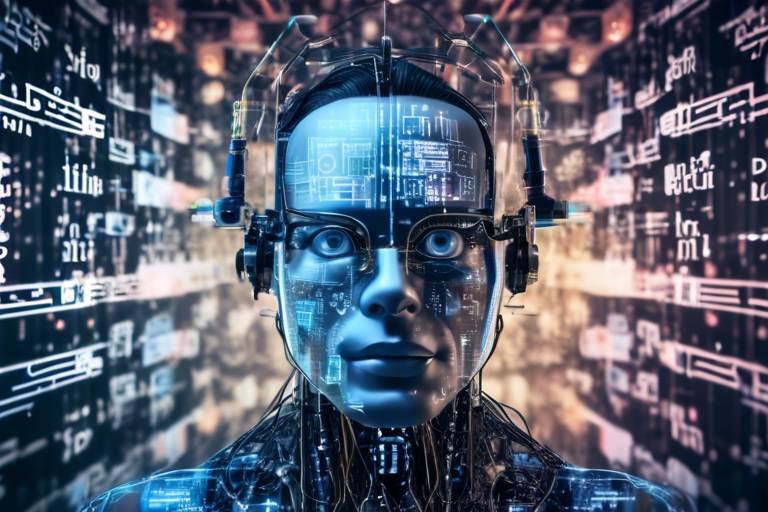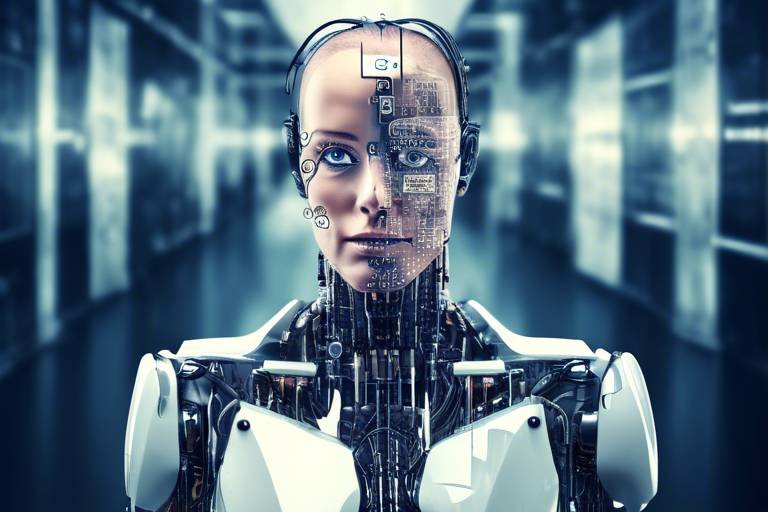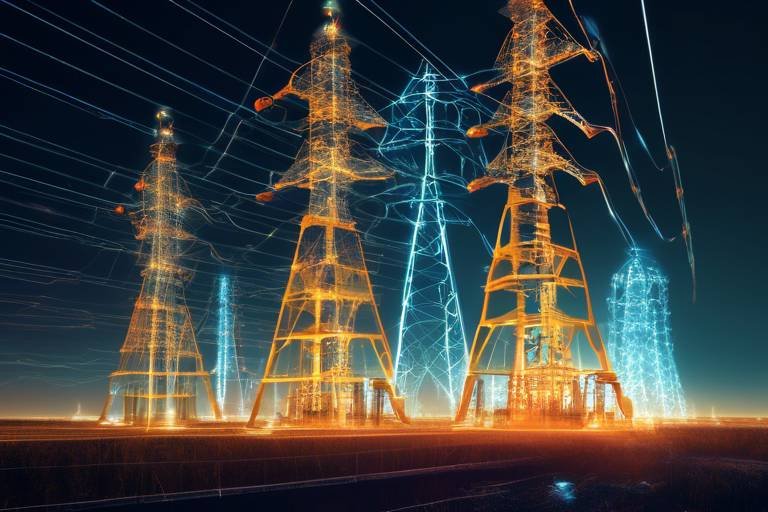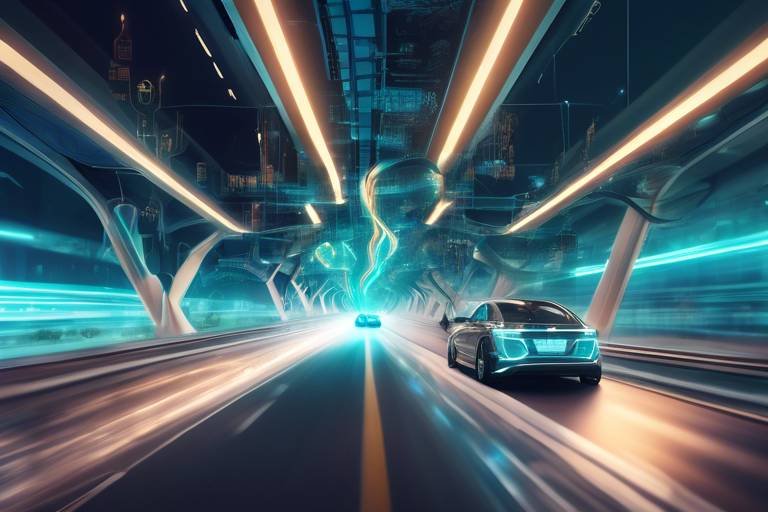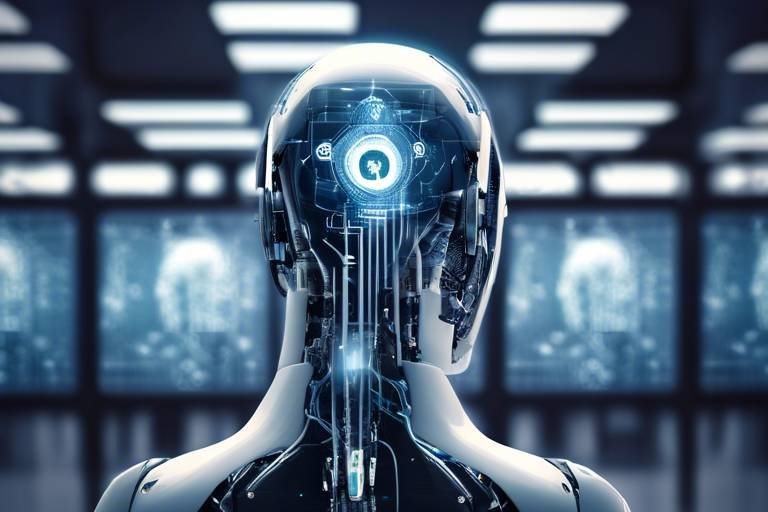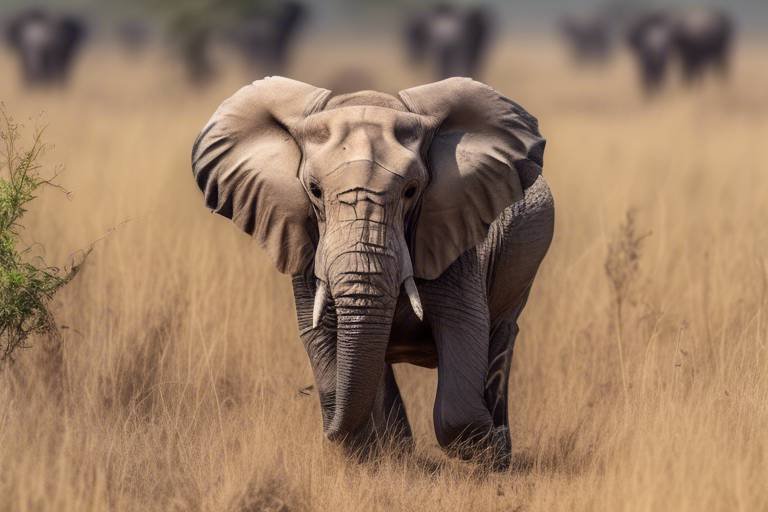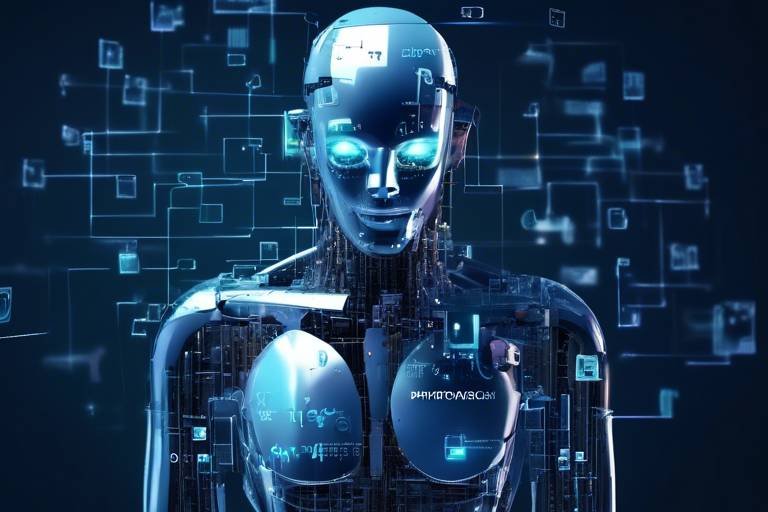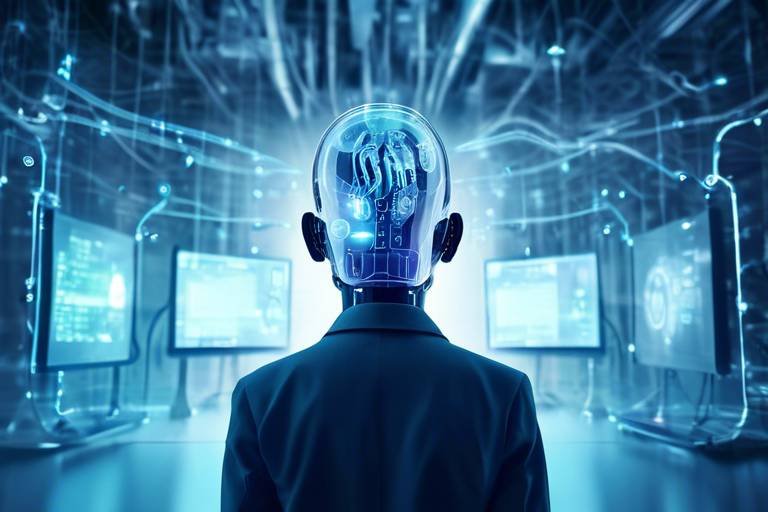Emerging Role of AI in Future Conservation Efforts
In an age where technology is reshaping every aspect of our lives, the realm of conservation is no exception. The emerging role of artificial intelligence (AI) in conservation efforts is not just a trend; it's a revolutionary shift that is enhancing how we protect our planet's biodiversity. From analyzing complex ecological data to monitoring wildlife populations, AI is becoming an indispensable tool for conservationists around the globe. Imagine having the ability to sift through mountains of data in mere seconds or having a virtual assistant that never tires, tirelessly working to ensure our ecosystems are safeguarded. This is the promise of AI, and it’s transforming conservation strategies in ways we never thought possible.
As climate change and human activities continue to threaten wildlife and their habitats, the integration of AI into conservation practices is a beacon of hope. By leveraging advanced algorithms and machine learning, researchers can now uncover patterns and insights that were previously hidden, leading to more informed decision-making. For instance, AI can analyze satellite imagery to detect deforestation trends or use historical data to predict the impact of climate change on specific species. This capability allows conservationists to prioritize actions in critical areas, ensuring that resources are allocated where they are needed most.
Moreover, AI's potential extends beyond just data analysis. It enhances wildlife monitoring through innovative technologies that provide real-time tracking and analysis of animal populations. Think of it as having a digital eye in the sky, constantly observing and reporting on the behaviors and movements of various species. This not only improves our understanding of wildlife but also enables timely interventions when threats arise. The use of AI in conservation is not merely a technological upgrade; it’s a paradigm shift that encourages collaboration among scientists, policymakers, and local communities.
As we delve deeper into this topic, we will explore the various facets of AI in conservation, from its capabilities in data analysis and wildlife monitoring to its role in engaging communities. The future of conservation is bright, and AI is at the forefront of this transformation, making it an exciting time for environmentalists and tech enthusiasts alike. So, how exactly is AI reshaping conservation efforts? Let’s take a closer look.

AI-Powered Data Analysis
Artificial intelligence is not just a buzzword; it's a game-changer in the realm of conservation. Imagine being able to sift through mountains of ecological data in the blink of an eye! With AI, researchers can process vast amounts of information, uncovering patterns and insights that were previously hidden from view. This capability is like having a superpower that enhances decision-making and prioritizes efforts in critical areas for biodiversity preservation. It’s about making informed choices that can have a lasting impact on our planet.
One of the fascinating aspects of AI-powered data analysis is its ability to identify trends that human analysts might miss. For instance, AI algorithms can analyze satellite imagery to monitor deforestation rates, track changes in land use, and even predict future environmental shifts. These insights allow conservationists to allocate resources more effectively, ensuring that efforts are concentrated where they are needed most. It's akin to having a crystal ball that reveals the future of our ecosystems!
Furthermore, AI tools can integrate data from various sources, such as weather patterns, species population dynamics, and human activities. This multifaceted approach creates a comprehensive picture of the environmental landscape. Take a look at the table below, which illustrates how different data sources contribute to a holistic understanding of conservation challenges:
| Data Source | Contribution |
|---|---|
| Satellite Imagery | Monitors land use changes and deforestation |
| Field Surveys | Provides ground-truthing for population assessments |
| Climate Data | Assesses impacts of climate change on habitats |
| Community Reports | Gathers local knowledge and observations |
By harnessing the power of AI, researchers can not only analyze existing data but also predict future outcomes. This predictive modeling is crucial for conservation efforts. For example, if AI indicates that a particular species is likely to decline due to habitat loss, conservationists can take proactive measures to protect that habitat before it’s too late. It’s like having a weather forecast for wildlife; you can prepare for the storm before it hits!
In addition to enhancing decision-making, AI-powered data analysis fosters collaboration among researchers, policymakers, and local communities. By sharing insights derived from AI analysis, stakeholders can work together more effectively, aligning their efforts towards common conservation goals. This collaborative spirit is essential, especially in a world where ecosystems are under constant threat from climate change and human activities.
In conclusion, AI is revolutionizing the way we analyze ecological data, making it possible to uncover insights and trends that were previously unattainable. By enhancing decision-making, improving resource allocation, and fostering collaboration, AI is paving the way for a more sustainable future. So, the next time you hear about AI in conservation, remember that it's not just technology—it's a lifeline for our planet!

Wildlife Monitoring Innovations
In recent years, the realm of wildlife monitoring has witnessed a remarkable transformation, thanks to the integration of artificial intelligence (AI) technologies. These innovations are not just a passing trend; they represent a fundamental shift in how we observe and understand wildlife. Imagine being able to track the movements of endangered species in real-time, gaining insights into their behavior, and ultimately making informed decisions that can significantly impact conservation efforts. This is the power of AI in wildlife monitoring.
One of the most exciting advancements in this field is the use of machine learning and computer vision. These AI-driven tools are revolutionizing the way researchers collect and analyze data about animal populations. By automating the monitoring process, we can now gather data more efficiently than ever before. For instance, traditional methods of wildlife surveys often involved labor-intensive tasks, such as manually counting animals or identifying species from photographs. With AI, we can streamline this process, allowing conservationists to focus on what truly matters: protecting our planet's biodiversity.
One of the standout innovations is the development of automated camera traps equipped with AI algorithms. These clever devices can not only capture images of wildlife but also identify and classify species in those images. This capability significantly reduces the time and labor required for wildlife surveys. Instead of spending hours sifting through thousands of photos, researchers can rely on AI to do the heavy lifting, enhancing the accuracy of population assessments. Imagine a world where conservationists can get instant feedback on wildlife populations without the burden of manual data processing!
Another compelling aspect of AI in wildlife monitoring is its ability to minimize human bias and error. Traditional data collection methods are often subject to the whims of human interpretation, leading to inconsistencies and inaccuracies. However, AI systems provide a more reliable alternative. By relying on algorithms and data-driven analysis, we can ensure that the results of wildlife studies are not only more accurate but also more trustworthy. This advancement translates to better-informed conservation actions and policies, ultimately leading to more effective protection of endangered species.
Imagine being able to receive real-time alerts about wildlife movements or environmental changes. AI-driven monitoring systems make this a reality, allowing conservationists to respond swiftly to threats such as poaching or habitat destruction. For instance, if a camera trap detects unusual activity in a protected area, an alert can be sent immediately to local authorities or conservation teams. This proactive approach can make all the difference in safeguarding vulnerable species and their habitats.
Moreover, AI facilitates predictive modeling, a powerful tool that helps conservationists forecast future scenarios based on current data. By analyzing trends and patterns, AI can assist in planning effective interventions to safeguard endangered species and habitats. For example, if data indicates a decline in a particular animal population, conservationists can take preemptive measures to address the issue before it escalates. This proactive mindset is crucial in a world where climate change and human impact are ever-present threats to biodiversity.
In conclusion, the innovations in wildlife monitoring driven by AI are not just technological advancements; they are a lifeline for conservation efforts worldwide. By harnessing the power of AI, we are not only enhancing our understanding of wildlife but also empowering conservationists to make data-driven decisions that can lead to tangible results in protecting our planet's precious ecosystems.
- How does AI improve wildlife monitoring? AI enhances wildlife monitoring by automating data collection, reducing human error, and providing real-time insights into animal behavior.
- What are camera traps, and how do they work? Camera traps are automated devices that capture images of wildlife. With AI, they can identify and classify species in those images, streamlining the monitoring process.
- Can AI help in predicting conservation outcomes? Yes, AI can analyze current data to forecast future scenarios, allowing conservationists to plan effective interventions for endangered species.
- Are there any risks associated with using AI in wildlife conservation? While AI offers many benefits, there are concerns about data privacy, the potential for bias in algorithms, and the need for human oversight in decision-making.

Camera Trap Automation
In the realm of wildlife conservation, is nothing short of a game changer. Imagine a world where researchers can monitor wildlife without the need for constant human presence in sensitive habitats. With the integration of artificial intelligence into camera traps, this dream is becoming a reality. These smart devices are equipped with advanced algorithms that can identify and classify species captured in images, drastically reducing the time and effort required for traditional wildlife surveys.
Gone are the days of manually sifting through thousands of photos, trying to distinguish between a fleeting glimpse of a deer and a shadowy figure of a bear. Thanks to AI, these automated systems can quickly analyze images and provide accurate data on animal populations. This not only enhances the accuracy of population assessments but also allows researchers to focus on what truly matters—developing effective conservation strategies.
Moreover, the efficiency of camera trap automation leads to a significant reduction in human error. By minimizing the potential for bias in data collection and analysis, AI systems ensure that the results are more reliable. This reliability is crucial for making informed decisions about conservation actions and policies. Imagine trying to hit a target while blindfolded; now imagine having a clear view of that target. That’s what AI does for conservationists—provides clarity and precision in a field where every detail counts.
Another remarkable aspect of these AI-powered camera traps is their ability to provide real-time data. When a camera captures significant wildlife movement or behavior, it can instantly send alerts to conservationists. This capability allows for swift responses to potential threats, such as poaching or habitat destruction. For instance, if a camera detects unusual activity in a protected area, conservationists can mobilize quickly to investigate and take appropriate action. This level of responsiveness is vital in today’s rapidly changing environment, where every moment counts.
As we look to the future of conservation, the role of camera trap automation will only grow. With continuous advancements in AI technology, we can expect even more sophisticated tools that not only enhance our understanding of wildlife but also empower conservationists to take decisive actions. The synergy between technology and conservation is paving the way for a more sustainable future, ensuring that we can protect our planet’s biodiversity for generations to come.
- What is camera trap automation?
Camera trap automation refers to the use of AI-enabled camera traps that can automatically identify and classify wildlife species in images, streamlining the monitoring process. - How does AI improve wildlife monitoring?
AI enhances wildlife monitoring by providing real-time data analysis, reducing human error, and allowing for quicker responses to environmental changes or threats. - Can anyone use camera traps for conservation?
Yes! With the rise of citizen science initiatives, everyday people can participate in conservation efforts by using camera traps and contributing data.

Reducing Human Error
When it comes to conservation efforts, accuracy is paramount. Imagine a world where the fate of endangered species hinges on data that is prone to human error. This is where artificial intelligence (AI) steps in as a game-changer. By automating data collection and analysis, AI significantly reduces the chances of mistakes that can occur due to fatigue, bias, or simple oversight. In traditional wildlife studies, researchers often rely on manual methods to gather and interpret data, which can lead to inconsistencies. With AI, however, we can ensure that the data is not only collected uniformly but also analyzed with precision.
One of the most compelling aspects of AI in this context is its ability to process vast datasets without the limitations that human researchers face. For instance, let’s consider a scenario where researchers are monitoring a large population of a threatened species. The sheer volume of data generated from camera traps, GPS collars, and environmental sensors can be overwhelming. AI algorithms can sift through this data, identifying patterns and anomalies that might escape human notice. This capability not only enhances the reliability of the findings but also enables conservationists to make informed decisions based on accurate data.
Moreover, AI systems can be programmed to learn from previous data, continually improving their accuracy over time. This is akin to having a seasoned expert on your team who learns from every project and becomes more adept with each passing day. In contrast, human researchers may inadvertently carry biases into their work, whether from preconceived notions about species behavior or environmental factors. AI, on the other hand, operates on data-driven insights, minimizing the risk of subjective interpretations.
To illustrate the impact of reducing human error, consider the following table that compares traditional methods with AI-driven approaches in wildlife monitoring:
| Aspect | Traditional Methods | AI-Driven Methods |
|---|---|---|
| Data Collection | Manual surveys, prone to oversight | Automated data gathering, consistent and reliable |
| Data Analysis | Subjective interpretation, potential for bias | Objective analysis, data-driven insights |
| Speed | Time-consuming, labor-intensive | Rapid processing, real-time insights |
| Learning Capability | Static knowledge base | Adaptive learning from data trends |
In summary, the integration of AI into conservation efforts is not merely a technological upgrade; it represents a fundamental shift in how we approach wildlife studies. By reducing human error, AI not only enhances the reliability of data but also empowers conservationists to act swiftly and effectively. This is crucial in a time when species are disappearing at an alarming rate, and every decision counts. With AI at our disposal, we can navigate the complexities of ecological data with confidence, ensuring that our efforts to protect the planet are grounded in accuracy and reliability.
- How does AI improve data accuracy in conservation? AI algorithms process data with minimal bias and fatigue, allowing for more reliable analysis compared to traditional methods.
- Can AI replace human researchers in conservation? While AI significantly enhances data collection and analysis, human expertise is still crucial for interpreting results and making informed decisions.
- What are the limitations of using AI in conservation? AI relies on high-quality data; if the input data is flawed or incomplete, it can lead to inaccurate conclusions.

Real-Time Alerts
Imagine you're a conservationist in a remote area, monitoring endangered species. Suddenly, you receive a real-time alert on your device indicating that poachers have been detected nearby. This is the power of AI-driven monitoring systems, which are transforming the way we respond to environmental threats. These systems utilize advanced algorithms to analyze data from various sources, such as satellite imagery, drones, and camera traps, to provide immediate notifications about wildlife movements or changes in environmental conditions.
With these alerts, conservationists can act swiftly, deploying teams to investigate suspicious activities or assess habitat changes that could endanger local species. The speed of this response can mean the difference between life and death for many animals. For instance, if a herd of elephants is spotted moving towards a human settlement, a real-time alert can prompt immediate action to prevent potential conflicts, ensuring the safety of both the wildlife and the local community.
Furthermore, these AI systems are designed to learn and adapt over time. As they process more data, they become increasingly accurate in predicting where threats may arise. This predictive capability is invaluable, allowing conservationists to allocate resources more effectively and prioritize areas that require urgent attention. The integration of real-time alerts into conservation strategies not only enhances operational efficiency but also fosters a proactive approach to wildlife protection.
In addition to immediate notifications, these systems can also provide insights into long-term trends. For example, if frequent alerts are triggered in a specific region, it may indicate a growing threat that requires a more comprehensive conservation strategy. By analyzing patterns in the alerts, conservationists can develop targeted interventions that address underlying issues, such as habitat degradation or illegal hunting.
As we look to the future, the role of AI in conservation continues to expand. Real-time alerts are just one aspect of a broader suite of tools that empower conservationists to tackle the challenges posed by climate change and human impact. By harnessing the power of technology, we can create a more sustainable future for our planet's biodiversity.
- What are real-time alerts in conservation?
Real-time alerts are notifications generated by AI systems that inform conservationists about immediate threats to wildlife, such as poaching or habitat destruction, enabling rapid response. - How does AI improve wildlife monitoring?
AI enhances wildlife monitoring by analyzing data from various sources, automating species identification, and providing insights into animal behavior and habitat usage. - Can community members participate in conservation efforts using AI?
Yes! AI tools facilitate citizen science initiatives, allowing local communities to contribute valuable data towards biodiversity monitoring and conservation efforts.

Predictive Modeling for Conservation
Predictive modeling is emerging as a groundbreaking tool in the realm of conservation, serving as a crystal ball that helps conservationists foresee potential future scenarios. Imagine being able to predict the fate of an endangered species or a fragile ecosystem before it even faces a threat. This is precisely what AI-powered predictive modeling offers. By analyzing current and historical data, AI algorithms can identify trends and project outcomes, allowing conservationists to make informed decisions today that will shape a healthier planet tomorrow.
One of the most compelling aspects of predictive modeling is its ability to process vast datasets that would be impossible for humans to analyze manually. For instance, researchers can input data on species populations, climate conditions, and habitat changes into an AI system. The AI can then simulate various scenarios—like the impact of climate change on a specific species or the effects of habitat restoration efforts—giving conservationists a clearer picture of what actions are most likely to succeed. This proactive approach is a game changer in the fight against biodiversity loss.
To illustrate how predictive modeling can be utilized effectively, consider the following table that outlines different factors and their potential impacts on conservation efforts:
| Factor | Potential Impact |
|---|---|
| Climate Change | Altered species migration patterns and habitat loss |
| Pollution | Decreased species health and reproductive success |
| Invasive Species | Competition for resources leading to native species decline |
| Human Activity | Habitat destruction and increased conflict with wildlife |
By understanding these factors, conservationists can prioritize their efforts. For example, if predictive modeling indicates that a particular species is at a high risk due to climate change, conservationists can allocate resources towards habitat restoration or create migration corridors to help the species adapt. This targeted approach not only maximizes the effectiveness of conservation efforts but also ensures that resources are used efficiently, which is crucial in an era of limited funding and increasing environmental challenges.
Moreover, predictive modeling can enhance collaboration among various stakeholders. When data is shared across platforms, different organizations can pool their resources and knowledge, leading to more comprehensive conservation strategies. For instance, local communities can provide valuable insights into changes they observe in their environment, which can then be integrated into predictive models. This collaboration fosters a sense of ownership and responsibility towards local ecosystems, empowering communities to play an active role in conservation.
In conclusion, the integration of predictive modeling into conservation strategies is not just a trend; it’s a necessity. As we face unprecedented challenges due to climate change and human activity, leveraging AI’s capabilities to forecast and plan for the future is critical. By embracing these advanced technologies, we can not only protect our planet's biodiversity but also ensure that future generations inherit a thriving natural world.
- What is predictive modeling in conservation?
Predictive modeling in conservation involves using AI algorithms to analyze current and historical ecological data to forecast future scenarios and outcomes related to species and habitats.
- How does AI improve conservation efforts?
AI enhances conservation efforts by providing tools for data analysis, wildlife monitoring, and predictive modeling, which help inform decision-making and optimize resource allocation.
- Can communities participate in predictive modeling?
Yes, local communities can contribute valuable data and insights that can be integrated into predictive models, fostering collaboration and empowering them in conservation efforts.
- What are the benefits of using AI in conservation?
The benefits include improved data accuracy, reduced human error, real-time monitoring, and the ability to make proactive conservation decisions based on predictive insights.

Community Engagement through AI
In the realm of conservation, community engagement is crucial, and artificial intelligence is stepping in to bridge gaps and foster connections. Imagine a world where local communities are not just passive observers but active participants in conservation efforts. AI tools are making this dream a reality by providing accessible platforms for data sharing and collaboration. These platforms empower individuals, families, and groups to take ownership of their natural environments, ensuring that conservation is a collective endeavor.
One of the most exciting aspects of AI in community engagement is its ability to facilitate Citizen Science Initiatives. These initiatives invite everyday people to contribute to scientific research, and AI is the engine that drives this participation. By streamlining data collection and analysis, AI allows citizens to easily gather and report valuable information about local wildlife and ecosystems. For example, consider a community that bands together to monitor bird populations in their area. With AI tools, they can input their observations into a shared database, which AI algorithms analyze to identify trends and patterns. This not only enriches the data available to researchers but also fosters a sense of community and shared purpose among participants.
Moreover, AI-driven educational platforms are playing a pivotal role in raising awareness about conservation issues. These platforms can tailor their content based on user preferences, making learning engaging and relevant. Imagine a young student in a remote village who loves nature. Through an AI-powered app, they could learn about local ecosystems, endangered species, and the impacts of climate change in a fun and interactive way. This personalized approach not only educates but also inspires a generation of environmental stewards who feel a deep connection to their surroundings.
Furthermore, the integration of AI in community engagement efforts can lead to more effective conservation strategies. By analyzing data collected from various community sources, AI can help identify critical areas that need protection or restoration. This data-driven approach ensures that resources are allocated efficiently, maximizing the impact of conservation efforts. For instance, if a community identifies a decline in a specific fish species, AI can analyze environmental factors contributing to this decline and suggest targeted interventions.
In conclusion, the role of AI in enhancing community engagement in conservation is transformative. By empowering individuals through citizen science projects and educational platforms, AI not only enriches data collection but also cultivates a sense of responsibility towards environmental stewardship. As we move forward, the collaboration between technology and local communities will be vital in addressing the pressing challenges facing our ecosystems.
- How does AI improve community engagement in conservation? AI streamlines data collection and analysis, making it easier for communities to participate in monitoring and protecting their local environments.
- What are Citizen Science Initiatives? These initiatives encourage everyday people to contribute to scientific research, often facilitated by AI tools that help in data collection and analysis.
- Can AI help in educating communities about conservation? Yes! AI-driven educational platforms can provide tailored content that engages diverse audiences and raises awareness about conservation issues.

Citizen Science Initiatives
Citizen science initiatives are becoming increasingly vital in the realm of conservation, acting as a bridge between professional researchers and the general public. Imagine a world where anyone, regardless of their background, can contribute to significant scientific research just by observing the nature around them. With the advent of artificial intelligence, this dream is becoming a reality. AI streamlines the process of data collection and analysis, making it easier for everyday people to participate in biodiversity monitoring and conservation efforts.
One of the most exciting aspects of citizen science is how it empowers local communities. When individuals engage in conservation activities, they develop a stronger connection to their environment. This sense of ownership can lead to more sustainable practices and a collective effort to protect local ecosystems. For example, AI-driven platforms can help citizens identify and report wildlife sightings, track environmental changes, or even monitor pollution levels in their neighborhoods.
Moreover, the integration of AI into citizen science projects means that the data collected is not only abundant but also highly valuable. Advanced algorithms can analyze trends and patterns in the data submitted by volunteers, providing insights that might otherwise go unnoticed. This collaborative approach ensures that conservation strategies are grounded in real-world observations, enhancing their effectiveness.
Furthermore, AI can facilitate the organization of vast amounts of data into user-friendly formats. For instance, consider a local bird-watching group that collects data on migratory patterns. With AI tools, they can visualize their findings through interactive maps or graphs, making it easier to share their results with the broader community. This not only enriches the scientific understanding of bird migration but also engages more people in the conversation about conservation.
In addition, educational platforms supported by AI can play a crucial role in citizen science initiatives. These platforms can provide tailored content that raises awareness about local conservation issues, helping to inform and inspire action. By engaging diverse audiences, they foster a sense of responsibility towards environmental stewardship. For instance, a young student learning about the impact of climate change on local wildlife may be motivated to participate in a community project, contributing valuable data while gaining hands-on experience in conservation.
As we move forward, the role of citizen science in conservation will only continue to grow. The combination of community engagement and AI technology creates a powerful force for change. By harnessing the collective efforts of individuals, we can tackle pressing environmental challenges and work towards a more sustainable future. Citizen science isn’t just about collecting data; it’s about building a community of informed and passionate individuals dedicated to protecting our planet.
- What is citizen science? Citizen science refers to the involvement of the general public in scientific research, often through data collection and analysis, to contribute to various fields of study, including conservation.
- How does AI enhance citizen science initiatives? AI improves data collection and analysis, making it easier for volunteers to contribute valuable information while also ensuring that the data is reliable and insightful.
- Can anyone participate in citizen science projects? Yes! Citizen science is open to everyone, regardless of their background or expertise. There are many projects that allow individuals to contribute simply by observing their surroundings.
- What are some examples of citizen science projects? Examples include bird watching, monitoring water quality, tracking wildlife populations, and participating in local clean-up efforts.

Educational Platforms
In the age of technology, powered by artificial intelligence are becoming game-changers in the field of conservation. Imagine a world where anyone, regardless of their background, can dive into the depths of ecological knowledge and emerge as a champion for the environment. These platforms not only offer a wealth of information but also tailor learning experiences to individual needs, making education more engaging and impactful. By leveraging AI, these platforms can analyze user interactions and preferences, allowing them to present customized content that resonates with diverse audiences.
For instance, consider how AI can curate courses and resources based on a user’s interests in specific wildlife or ecosystems. This personalized approach fosters a deeper connection to conservation efforts, encouraging individuals to take action. Furthermore, many of these platforms include interactive elements, such as quizzes and simulations, that transform passive learning into an active experience. This engagement is crucial because when people feel involved, they are more likely to care about the issues at hand.
Moreover, educational platforms often incorporate real-world case studies that highlight successful conservation initiatives. By showcasing these examples, users can see the tangible impact of their efforts and understand the importance of collective action. For instance, a platform might present a case study on how community-led reforestation projects have revitalized local ecosystems. This not only inspires users but also provides them with practical strategies they can implement in their own communities.
Additionally, many AI-driven educational platforms encourage community collaboration. Users can connect with like-minded individuals, share insights, and even participate in group projects. This sense of community is vital as it fosters a shared responsibility towards conservation. Imagine a global network of individuals who are all working towards a common goal—protecting our planet. The potential for collective impact is enormous.
To further enhance the learning experience, these platforms often include features such as:
- Interactive Webinars: Live sessions with conservation experts where users can ask questions and gain insights.
- Resource Libraries: A vast collection of articles, videos, and research papers accessible to all users.
- Gamified Learning: Engaging users through games and challenges that teach important conservation concepts.
In conclusion, AI-powered educational platforms are not just about disseminating information; they are about empowering individuals to become active participants in conservation. By making learning accessible, engaging, and community-oriented, these platforms are paving the way for a more informed and proactive generation of environmental stewards.
Q1: How do AI educational platforms enhance learning in conservation?
A1: AI educational platforms enhance learning by providing personalized content, interactive elements, and real-world case studies that engage users and foster a deeper understanding of conservation issues.
Q2: Can anyone use these platforms, or are they designed for experts?
A2: These platforms are designed for everyone, from beginners to experts. They offer tailored learning experiences that cater to various knowledge levels.
Q3: What types of resources can I find on AI-driven educational platforms?
A3: Users can find a variety of resources, including articles, videos, case studies, webinars, and interactive quizzes that cover a wide range of conservation topics.
Q4: How can I get involved in community projects through these platforms?
A4: Many platforms offer forums and collaboration tools where users can connect with others interested in conservation projects, share ideas, and participate in community-led initiatives.
Frequently Asked Questions
- How is AI transforming conservation efforts?
AI is revolutionizing conservation by enabling researchers to analyze vast amounts of ecological data quickly and efficiently. This leads to uncovering patterns that inform better conservation strategies and prioritizing areas that need immediate attention for biodiversity preservation.
- What role does AI play in wildlife monitoring?
AI technologies, such as machine learning and computer vision, enhance wildlife monitoring by providing real-time tracking and analysis of animal populations. This helps us understand species behavior and habitat usage more effectively than ever before.
- Can AI reduce human error in conservation data?
Absolutely! AI systems can minimize human bias and errors in data collection and analysis, leading to more reliable results in wildlife studies. This accuracy is crucial for making informed conservation decisions and policies.
- What are camera trap automation and its benefits?
Automated camera traps equipped with AI algorithms can identify and classify species in images. This significantly reduces the time and labor required for wildlife surveys and enhances the accuracy of population assessments, making conservation efforts more efficient.
- How does AI facilitate real-time alerts for conservationists?
AI-driven monitoring systems can send real-time alerts about wildlife movements or environmental changes. This allows conservationists to respond swiftly to urgent threats like poaching or habitat destruction, ultimately protecting vulnerable species more effectively.
- What is predictive modeling in conservation using AI?
Predictive modeling with AI helps conservationists forecast future scenarios based on current data. This proactive approach enables the planning of effective interventions to safeguard endangered species and their habitats before it's too late.
- How does AI enhance community engagement in conservation?
AI tools are making it easier for local communities to engage in conservation efforts by providing accessible platforms for data sharing and collaboration. This empowers individuals to actively participate in protecting their natural environments.
- What are citizen science initiatives supported by AI?
AI supports citizen science projects by streamlining data collection and analysis, allowing everyday people to contribute valuable information for biodiversity monitoring and conservation efforts. This democratizes the conservation process and enriches data quality.
- How can AI-driven educational platforms help in conservation?
AI-driven educational platforms can raise awareness about conservation issues by providing tailored content that engages diverse audiences. This fosters a deeper sense of responsibility towards environmental stewardship among individuals and communities.




